Less than a month to go before the winter football transfer window will open in Europe. We await a lot of transfers again, regardless of their costs. One thing that should not be underestimated is the fact of how much each club spent already in summer. Which clubs are even able to spent again in winter? To evaluate that, we take a look at the previous football transfer window in summer 2020.
As part of the COVID-19 pandemic, the football summer transfer window 2020/21 turned out as a particularly special one: The previous season ended late in most leagues and the transfer window in Europe was open until October. But the buying and selling behaviour of the clubs within the transfer market has also changed. This series takes a closer look at the transfer deals in the top leagues in Europe as we start with the German Bundesliga.
Methodology
First of all, we will need to clarify which statistics we will focus on. We consider all relevant information in terms of departures, arrivals, income and expenditure of each club.
In this analysis, we will take a close look at the number of arrivals and departures from different clubs. In addition, the data analysis will show how much each individual club has spent on these arrivals and earned on departures (always in million euros). In the end, we will be able to take balance by comparing income and expenditure.
Arrivals & Departures
We start with a comparison between arrivals and departures at each club. How many players are new at the club and how many players left the club? This also includes players who came back from a loan or who are currently on a loan.
It is quite interesting to see that financially weakened clubs like 1.FC Köln, FC Schalke and Werder Bremen had the most arrivals during the summer transfer window. Most arrivals went to 1.FC Köln (25).
The same clubs are also the clubs with the most departures in terms of saving wages. Only one club lost more players in the transfer window: Union Berlin (28).
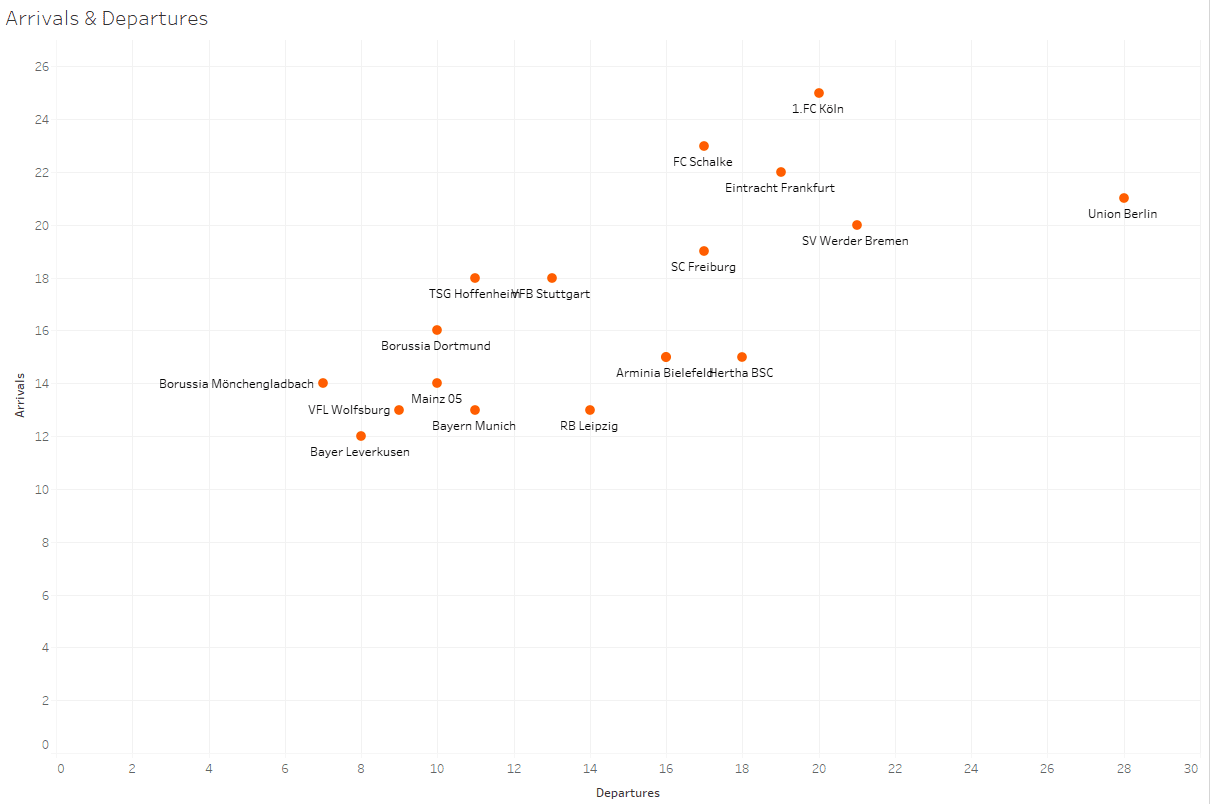
Financially strong clubs like record champions FC Bayern Munich (13 arrivals), Borussia Dortmund (16 arrivals) and Bayer Leverkusen (12 arrivals) were not as active as the smaller clubs but reinforced selectively. These teams had more arrivals than departures.
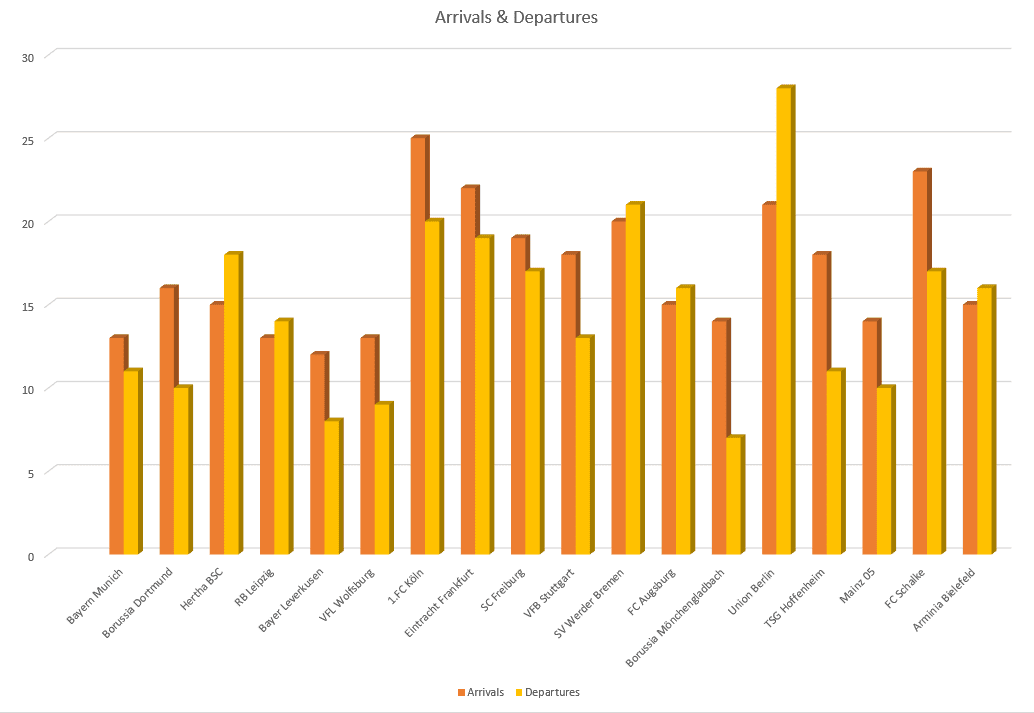
Expenditure & Arrivals
In the second step, we take a look at how much each club spent in relation to the number of new arrivals.
It is outstanding that the two top clubs FC Bayern Munich (64 million euros) and Borussia Dortmund (48 million euros) followed by financial strong clubs Bayer Leverkusen, RB Leipzig and Hertha BSC Berlin spent the most money this summer. These clubs got between 12 and 16 players each for their expenditures.
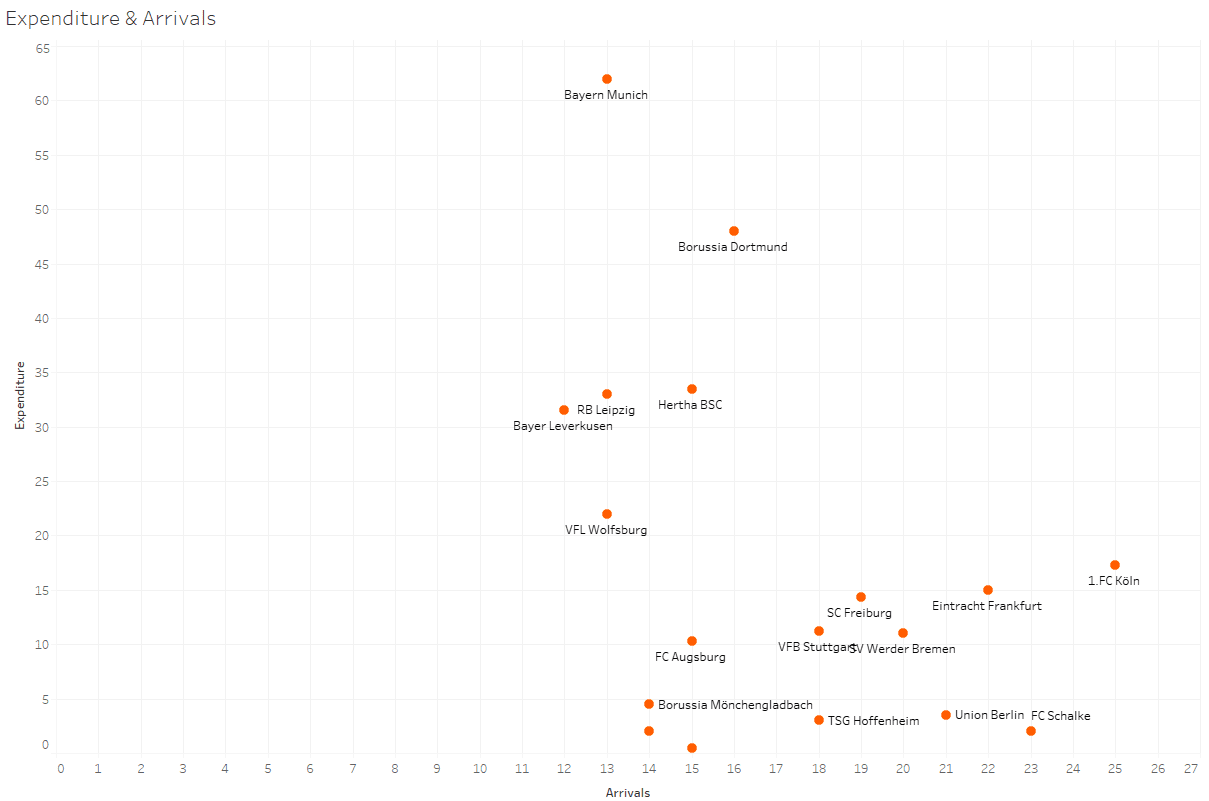
That sounds quite a lot but in comparison to clubs like FC Schalke (2,5 million euros for 23 arrivals) and Union Berlin (4 million euros for 21 arrivals), they went for quality instead of quality. Schalke 04 and Union Berlin worked a lot with loan players in order to save wages and to dispense on transfer fees. Only one club spent nothing for transfer fees: Arminia Bielefeld.
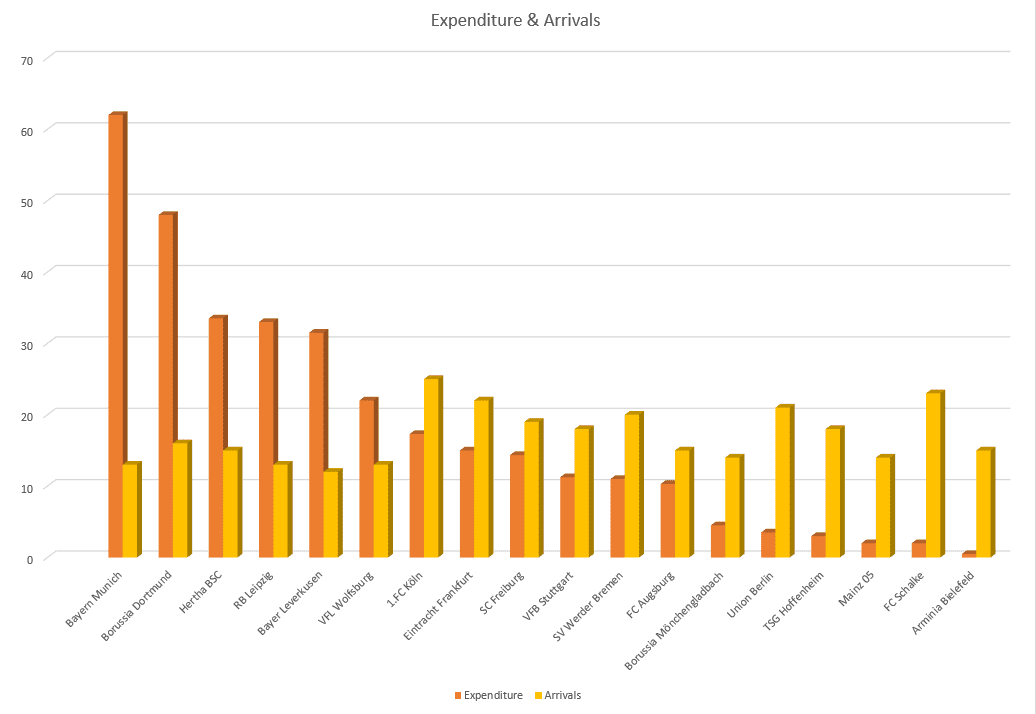
Income & Departures
In the third step, we also take a look at how much each club earned in relation to the number of departures in the 2020´s summer transfer window.
Bayer 04 Leverkusen earned the most income by far (96 million euros). The departure of Kai Havertz already brought 80 million. RB Leipzig and SC Freiburg are clubs well known for their development of players. This also shows the previous transfer window as these two clubs had an income of 58 million euros (RB Leipzig) and 49 million euros (SC Freiburg). With Borussia Mönchengladbach and Arminia Bielefeld, two clubs did not earn anything for their departures.
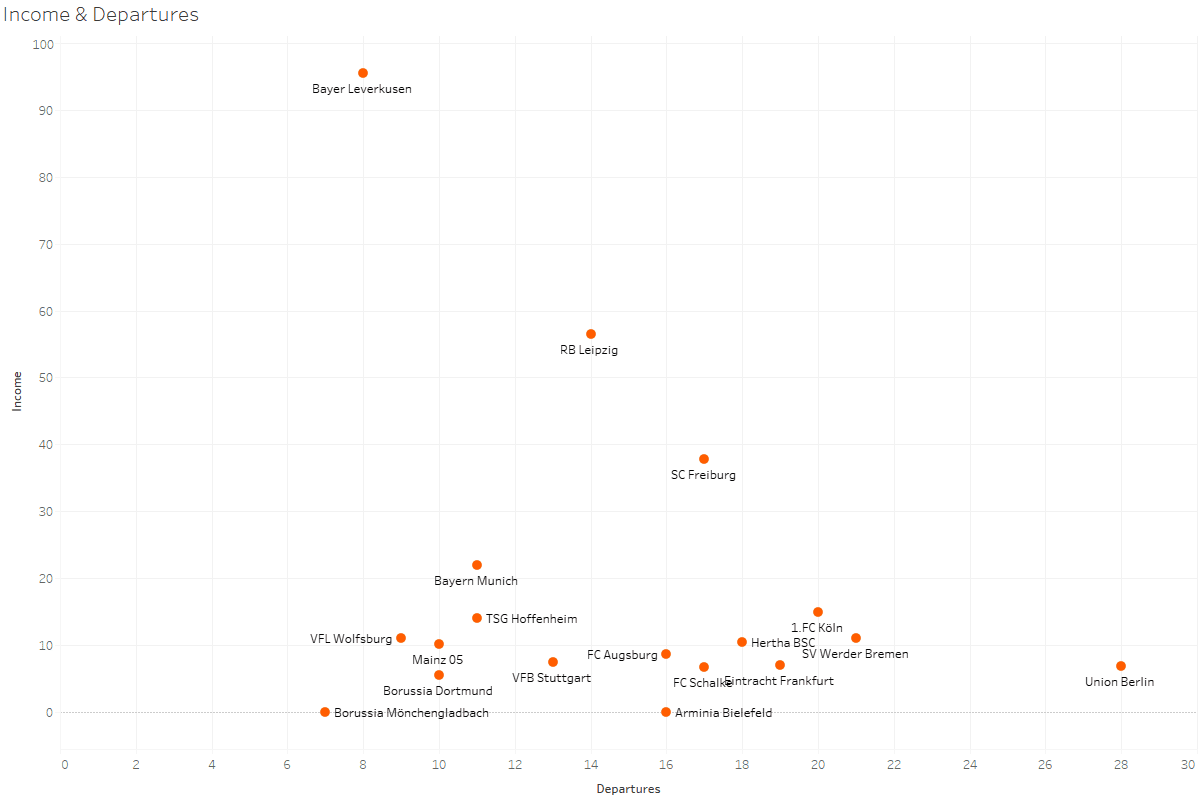
As already said before, Union Berlin had the most departures of 28 followed by Werder Bremen with 21 departures. Borussia Mönchengladbach (7) and VFL Wolfsburg (9) had the most reduced number of departures.
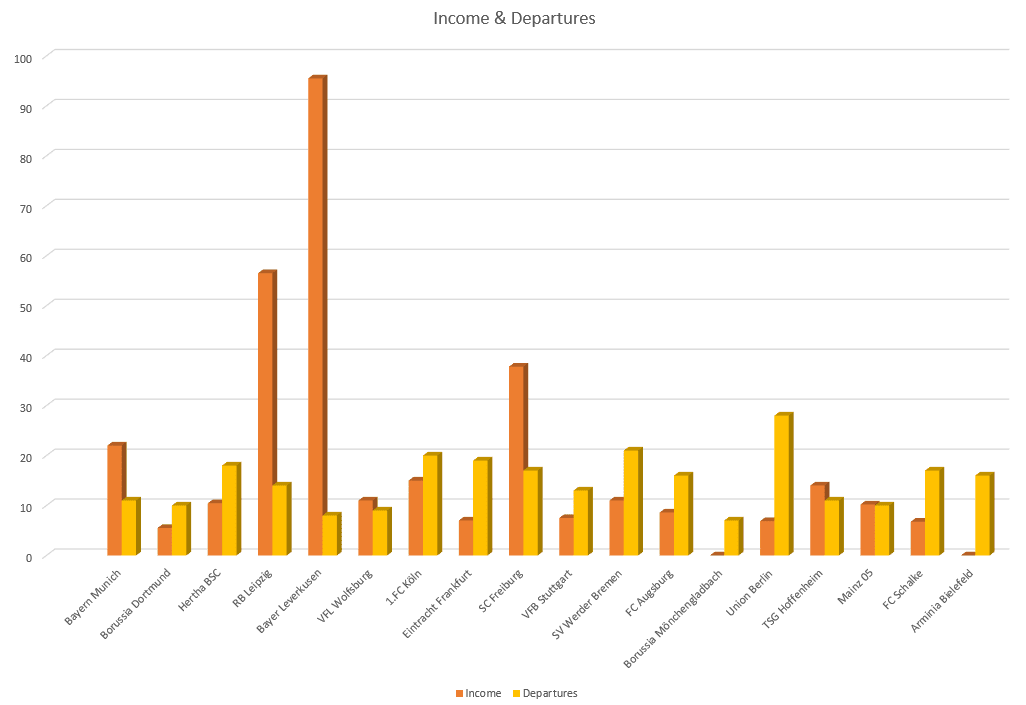
Balance
Now, we can take a balance in order to evaluate the summer transfer window in Germany´s Bundesliga. Therefore, we add the expenditure to the income of each club.
Thanks to their income of 96 million euros, Bayer 04 Leverkusen had the best balance of 64 million euros even as they also reinvested a lot of money (32 million euros). As we already said, next to the best balance, they also received the best income.
The two biggest clubs in Germany had the most expenditures. FC Bayern Munich spent 62 million euros and Borussia Dortmund spent 49 million euros. While Bayern Munich has a balance of -40 million euros, Dortmund provides a balance of -42 million euros.
With Arminia Bielefeld, the Bundesliga had one clubs that neither spent money for new arrivals nor earned income due to departures.
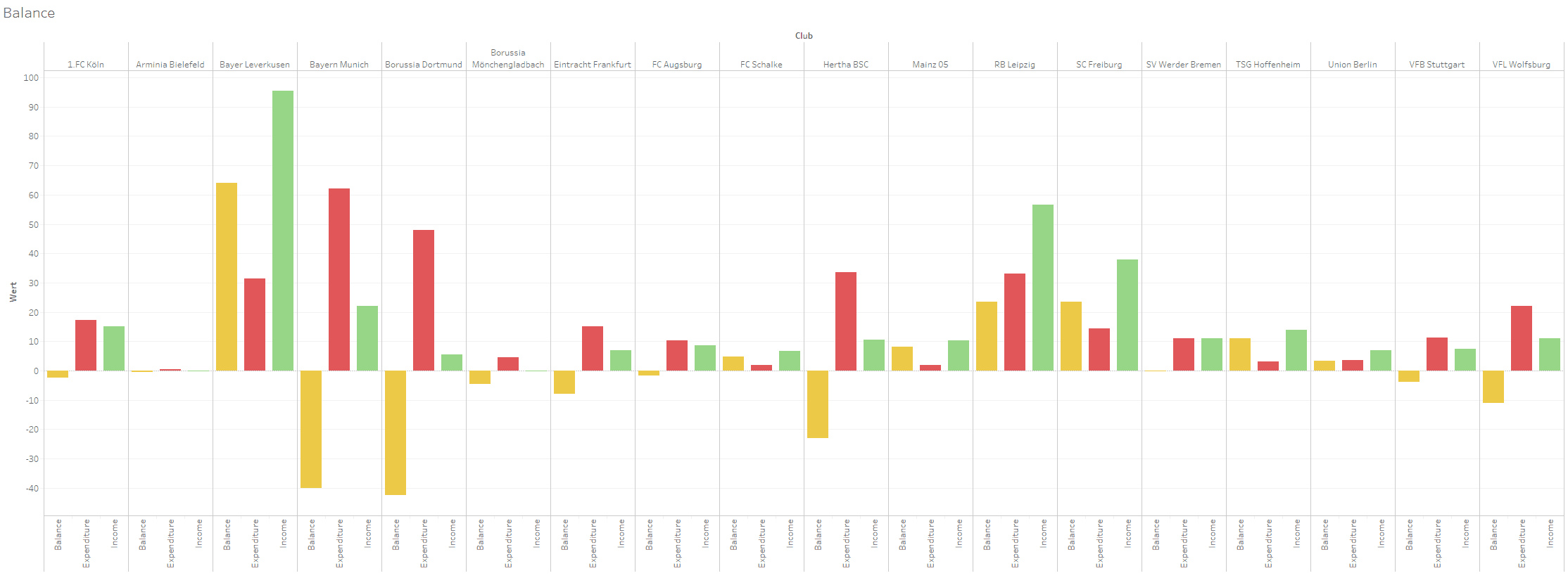
Conclusion
The biggest clubs in Germany spent the most money and had the most negative balance. That is why they are unlikely to buy any new players in the winter transfer window if they do not sell any player from their current squad. Bayer Leverkusen acted smartly in summer and now has some more money to spend on possible winter transfers. Milot Rashica from Werder Bremen is their transfer target number one. Arminia Bielefeld went in the season without any changes to their squad in the 2.Bundesliga. Therefore, they struggle to play at that high level. However, it does not seem like they have the finances to buy a lot of good players in winter.




Comments